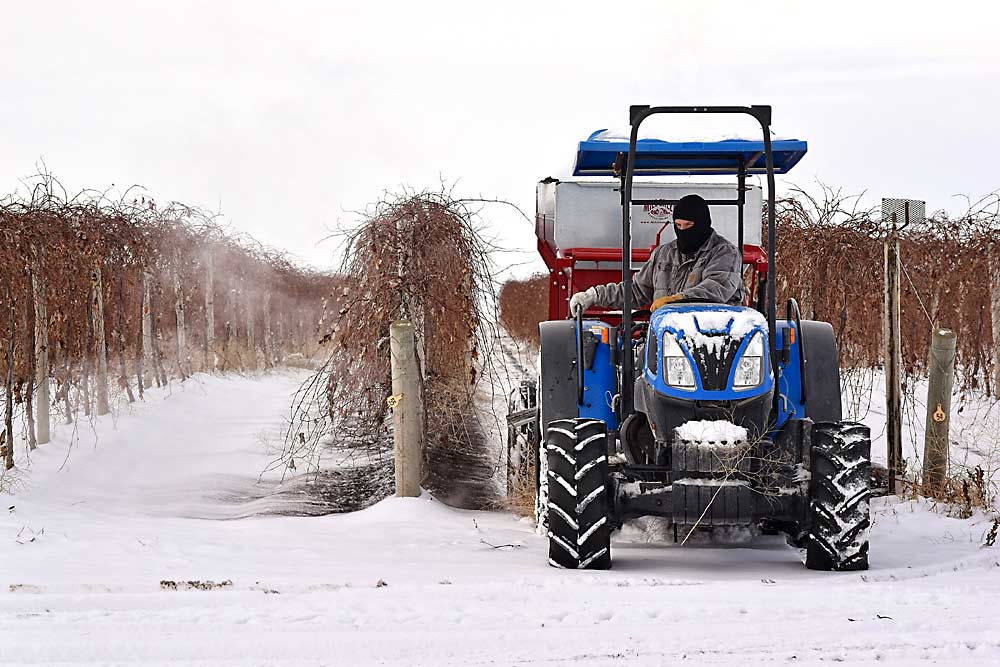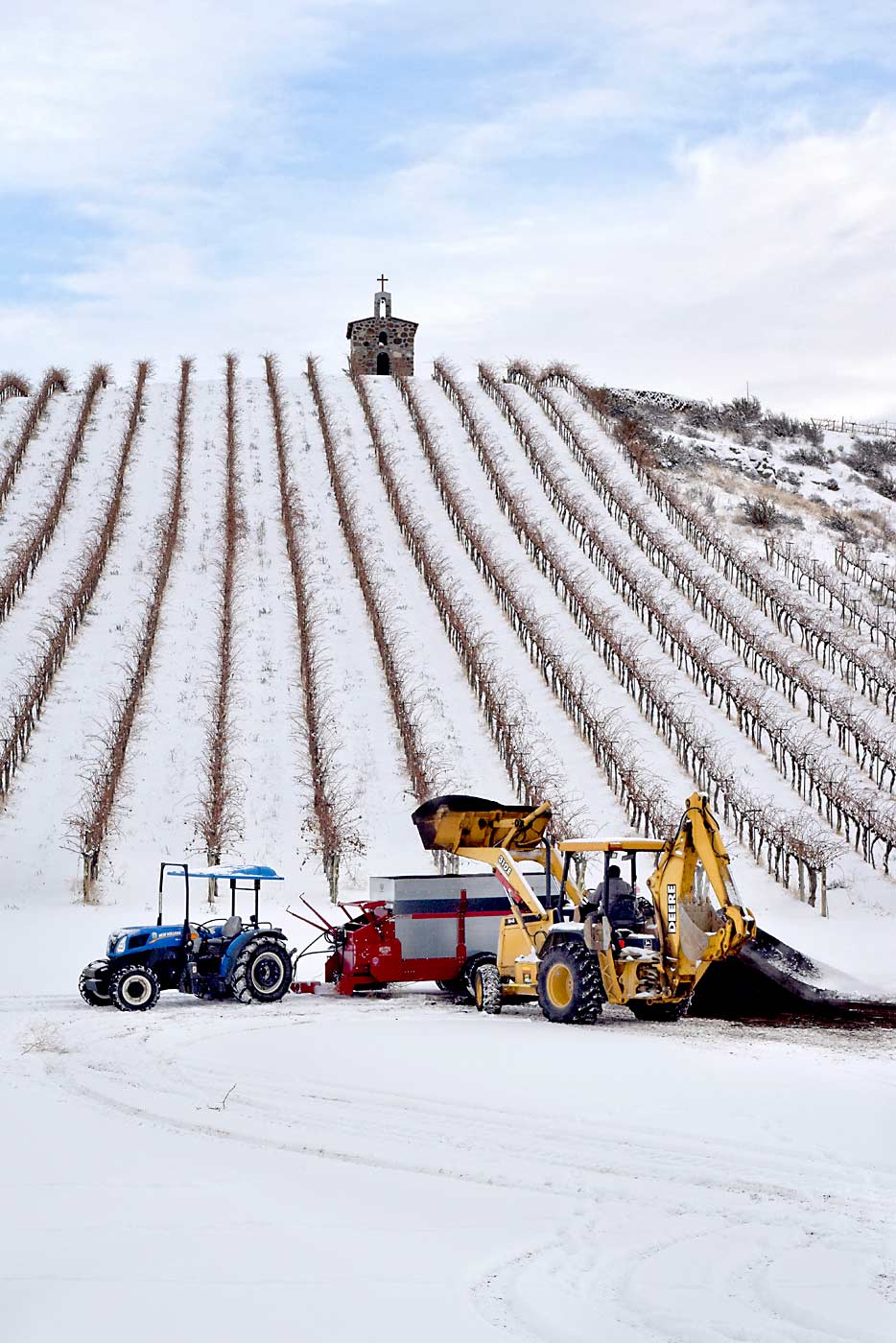
The Sauers of Red Willow Vineyards apply compost to their vineyards every three to four years. They have for well over a decade.
As a result, their soil seems healthier — softer, loamier, damper. “More alive,” said Jonathan Sauer, admittedly at a loss for how to describe the benefits they have noticed.
He’s not alone in that; even soil scientists struggle to define and measure soil health. But the Sauers take a forward-thinking approach to compost as one technique of many in their overall soil nutrition program.
“We kind of view compost as more of a long-term game,” said Sauer, vice president of Red Willow Vineyards in Wapato, Washington. The family farm, which has Concord and wine grapes, as well as alfalfa, goes back four generations, though Sauer’s father, Mike, first planted the vineyards. Annually, the Sauers use a combination of commercial fertilizers and other soil amendments.
In fact, they experimented with using only compost on a block of Concords for a couple of years in a row but determined that it wasn’t enough on its own.
The Sauers favor dairy compost over straight manure because the straw that comes with it creates a better balance of carbon and nitrogen. They use a band spreader, depositing the material directly under the canopy.
“Overall, we’re just trying to build soil life and, in doing that, build balanced, healthy vines,” he said.
Long-term is the correct approach for compost and soil health, said Joan Davenport, Washington State University soil science professor emerita, who works with small fruit and grapes.
For one thing, compost improves soil’s water-holding capacity, she said. It builds organic matter that provides a source of nitrogen and breaks down slowly over years. Compost also boosts the biological components of the soil, which then improve soil structure and increase nutrient-holding capacity.

Sauer has a point, Davenport said: It can be tricky to measure the benefits. Even researchers in her field can’t agree on metrics. “Soil health is one of the most controversial topics among soil scientists, partly because we don’t know how to measure it,” she said.
One caution she has with compost: salt. Davenport recommends asking compost vendors to show analyses of their compost. If salt content is high, the compost may not be finished.
Davenport suggests all growers test their soil every few years, but those who use compost may want to increase their frequency to check for buildup of salts, which will impede a plant’s ability to take up water and nutrients.
“I don’t see a problem (applying compost) every year,” she said. “Just monitor the conditions.”
Lighthouse Farms of Sunnyside, Washington, applies compost every year to its juice grapes and tests its soil every year, said Chelsea Durfey Campbell, a fourth-generation co-owner who manages farm operations and strategy.
She estimates that about 30 percent of the compost layer will break down into available nitrogen the first year, between 15 percent and 20 percent the second year, and the rest following in subsequent years. They plan their layers accordingly, to make sure new nutrients are ready every year.
“It is a long game,” Durfey Campbell said.
They usually apply the compost in late fall, typically band spreading it under the vines. But every few years they broadcast over their drive row cover crops, too.
Durfey Campbell’s family also owns Natural Selection Farms, which produces compost. Unless customers specifically ask for compost with manure, they use only vegetative feed stock — the grape pomace, juice, wine and beer waste, yard trimmings and the like — for their compost. At customer request, they sometimes add more singular micronutrients, such as potassium or sulfur, into the compost blend.
Durfey Campbell recommended growers give compost a sniff test before buying it. Mature, finished compost should smell earthy, not like ammonia.•
—by Ross Courtney






Leave A Comment